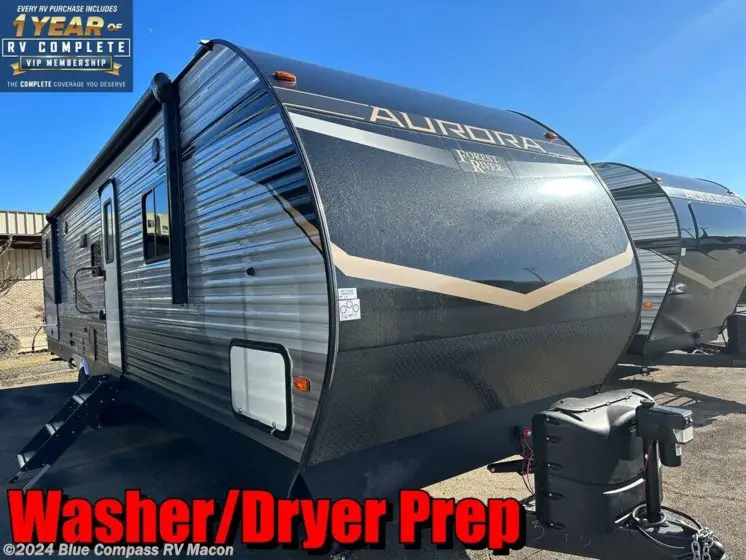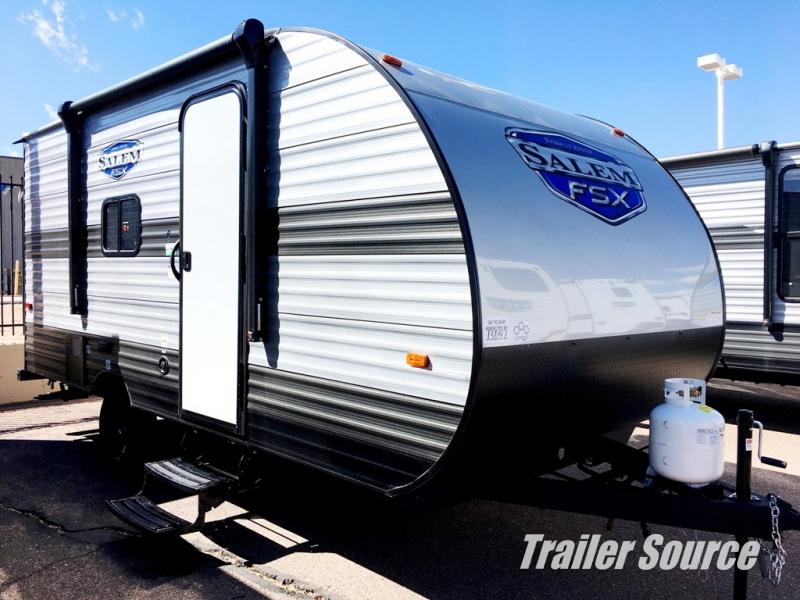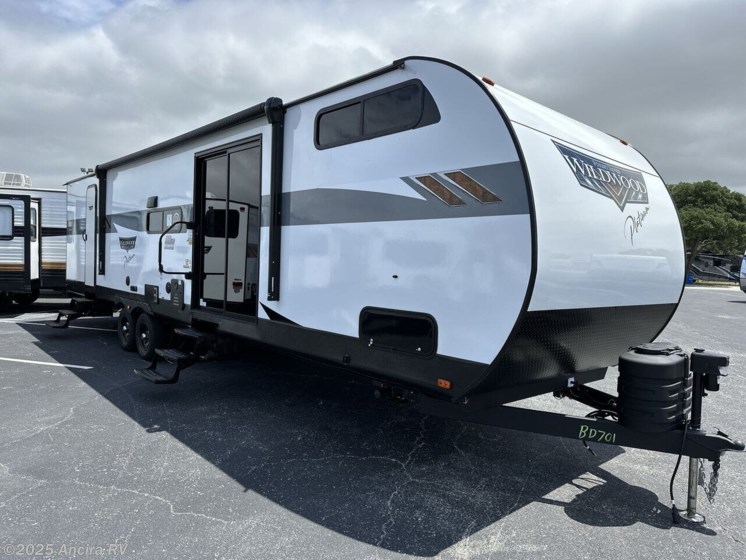The Forest River RV power converter is typically located inside the RV near the electrical panel. It converts AC power to DC power for your RV appliances.
For RV owners, understanding the location of the power converter is essential for easy access and maintenance. The power converter is a crucial component that ensures your appliances receive the appropriate power supply while plugged into shore power. By knowing its location within your Forest River RV, you can troubleshoot any electrical issues efficiently.
In this guide, we will explore the typical placement of the power converter in Forest River RVs, highlighting the importance of this component for your overall camping experience. Let’s dive in to discover more about the power converter in a Forest River RV and its significance for your travels.

- Understanding Forest River Rv Power Converter
- Locating The Power Converter In Forest River Rv
- Accessing The Power Converter
- Troubleshooting Power Converter Issues
- Upgrading The Power Converter
- Maintaining The Power Converter
- Frequently Asked Questions For Forest River Rv Power Converter Location
- Conclusion
Understanding Forest River Rv Power Converter
Locating the Forest River RV power converter is crucial for maintenance and troubleshooting. Typically found near the distribution panel, it ensures efficient power distribution within the RV. Familiarizing yourself with its location can aid in resolving electrical issues promptly.
What Is A Power Converter?
A power converter is a crucial component in Forest River RVs that converts AC power into DC power to ensure proper functioning of various electronic devices.
Importance Of Power Converter In Forest River Rvs
The power converter is essential in Forest River RVs to supply electricity to appliances and equipment that require DC power, ensuring a smooth operation of the RV.

Credit: www.trailersourceinc.com
Locating The Power Converter In Forest River Rv
For Forest River RV owners, locating the power converter is a crucial task. The power converter in Forest River RVs is typically situated near the electrical panel for easy access. Look for it in the lower compartments or behind a removable panel for quick identification and troubleshooting.
Locating the Power Converter in Forest River RV Types of power converter placements Common locations to find the power converter Types of power converter placements: In Forest River RVs, power converters are typically situated in several locations primarily based on the RV’s layout and design. 1. Interior placement: Often located near the electrical panel for easy access and maintenance. 2. Under-bed placement: Some models have the power converter installed under the bed for space optimization. 3. Closet placement: In certain RVs, the power converter may be housed within a closet, providing a concealed yet accessible location. Common locations to find the power converter: 1. Behind the electrical panel: Easily accessible for troubleshooting and repairs. 2. Near the batteries: Positioned close to the batteries for efficient power conversion. 3. Under the sink or stove: Some RVs have the power converter conveniently placed in these areas for easy access. In conclusion, knowing where to locate the power converter in your Forest River RV is essential for maintenance and troubleshooting purposes.Accessing The Power Converter
When it comes to RV power converters, locating and accessing them might seem like a daunting task. However, with the right safety precautions and tools, accessing the power converter can be a straightforward process. Whether you need to perform maintenance or troubleshooting, knowing how to access the power converter is essential for RV owners.
Safety Precautions Before Accessing
- Disconnect the shore power or turn off the main breaker to ensure there is no electricity flowing through the system.
- Wear protective gloves and goggles to safeguard yourself from any potential hazards.
- Make sure you are working in a well-ventilated area to prevent the buildup of harmful fumes.
- Keep any flammable materials away from the power converter to avoid accidents.
Tools You May Need
Before you start accessing the power converter, gather the following tools:
- Flathead screwdriver
- Phillips screwdriver
- Multimeter
- Flashlight
- Wire strippers
- Electrical tape
Steps To Access The Power Converter
- Locate the power converter in your RV. Typically, it is found in one of the storage compartments or under the bed.
- Open the access panel using the appropriate screwdriver. Be careful not to damage the panel in the process.
- Once the panel is removed, you will have a clear view of the power converter.
- Take a moment to familiarize yourself with the different components of the power converter, such as the converter box and circuit breakers.
- Use the multimeter to check the voltage output of the power converter. This will help determine if the converter is functioning properly.
- If you need to replace any fuses or troubleshoot specific issues, refer to the RV’s manual or consult a professional for guidance.
- When you’re finished accessing the power converter, securely close and fasten the access panel to prevent any damage or hazards.
By following these steps and using the appropriate safety precautions, you can confidently access your RV’s power converter and ensure its proper functioning. Remember, if you’re unsure about any step or encounter complex electrical issues, it’s always best to seek professional assistance for your safety and the longevity of your RV’s power system.

Credit: www.rvusa.com
Troubleshooting Power Converter Issues
When residing in a Forest River RV, encountering power converter issues can interrupt your journey and affect your overall experience. Understanding common problems, diagnosing issues, and resolving them effectively can increase your confidence in handling power converter disruptions.
Common Power Converter Problems
Power converter issues in Forest River RVs are commonly related to faulty wiring connections, blown fuses, overloading, or malfunctioning components. These problems can lead to power fluctuations, insufficient charging, or total power loss, impacting the functionality of various electrical devices within the RV.
Diagnosing Power Converter Issues
Diagnosing power converter problems involves inspecting the wiring, checking for blown fuses, and testing the output voltage. Utilizing a multimeter can help in determining the presence of proper voltage output and identifying any irregularities. Additionally, identifying any signs of visible damage or burnt components in the power converter unit is essential in diagnosing the issue.
Steps To Resolve Power Converter Problems
- Inspect all wiring connections and ensure they are secure and free from corrosion.
- Check and replace any blown fuses to prevent electrical interruptions.
- Verify the input and output voltage of the power converter using a multimeter and replace the unit if necessary.
- Unplug any overloaded devices and distribute the electrical load evenly to prevent overloading.
- Clean and maintain the power converter unit regularly to prevent dust accumulation and potential overheating.
Upgrading The Power Converter
Upgrading the power converter in your Forest River RV can enhance its electrical efficiency and performance, ensuring a reliable power supply for all your onboard appliances and devices. Understanding the reasons to upgrade, the types of power converter upgrades available, and how to choose the right upgrade for your specific needs is crucial for a seamless transition to a more advanced power converter.
Reasons To Upgrade
Several compelling reasons exist for upgrading the power converter in your Forest River RV. These include:
- Improved charging capabilities for your RV batteries
- Enhanced power efficiency and reduced energy consumption
- Compatibility with advanced electrical systems and appliances
- Increased reliability and longevity of the power supply
Types Of Power Converter Upgrades
When considering an upgrade, you have options that cater to different requirements. The most common types include:
- Multi-stage converters for optimal battery charging
- Smart converters with built-in surge protection and diagnostics
- High-output converters suitable for powering extensive electrical systems
- Energy-efficient converters to minimize power wastage
Choosing The Right Power Converter Upgrade
Selecting the right power converter upgrade involves assessing your specific power needs, budget, and compatibility with your RV’s electrical system. Factors to consider include:
- Amperage capacity to support all onboard appliances
- Compatibility with your RV’s battery system
- Integration with any solar or alternative power sources
- Quality and reliability of the converter manufacturer
Maintaining The Power Converter
Regular maintenance of your Forest River RV Power Converter is essential to ensure its optimal performance and longevity. By keeping your power converter in good condition, you can avoid potential issues that may arise during your camping trips and enjoy uninterrupted power supply on the road. In this section, we will discuss the importance of regular maintenance, cleaning and inspecting the power converter, and helpful tips to extend its lifespan.
Importance Of Regular Maintenance
Regular maintenance of your Forest River RV Power Converter is crucial in order to prevent unexpected breakdowns and malfunctions. By taking the time to inspect and clean your power converter on a regular basis, you can detect any potential issues early on and address them before they become major problems. This not only ensures that your power converter functions efficiently but also saves you from costly repairs or replacement down the line.
Cleaning And Inspecting The Power Converter
To keep your power converter running smoothly, it is important to clean and inspect it regularly. Start by disconnecting the power source and removing the power converter cover. Use a soft brush or compressed air to remove any dust, dirt, or debris that may have accumulated on the components. Pay close attention to the vent slots and ensure they are clear of any blockages. Inspect the wiring connections to make sure they are secure and free from any signs of damage or corrosion. If you notice any loose connections or frayed wires, tighten or replace them as needed.
| Step-by-step Guide for Cleaning and Inspecting the Power Converter: |
|---|
| 1. Disconnect the power source and remove the power converter cover. |
| 2. Use a soft brush or compressed air to remove dust, dirt, and debris. |
| 3. Check the vent slots for blockages and clear them if necessary. |
| 4. Inspect the wiring connections for damage or corrosion. |
| 5. Tighten or replace any loose connections or frayed wires. |
Tips For Extending Its Lifespan
By following these tips, you can help extend the lifespan of your Forest River RV Power Converter:
- Keep the power converter in a cool, dry location to avoid overheating and moisture damage.
- Ensure proper ventilation around the power converter to prevent heat buildup.
- Regularly check the battery voltage and ensure it is within the recommended range for optimal performance.
- Avoid overloading the power converter by connecting too many appliances or devices at once.
- Invest in a surge protector to safeguard the power converter against power surges and voltage fluctuations.
- Consider using a battery tender or maintainer during storage periods to keep the battery charged and prevent sulfation.
By incorporating these maintenance practices into your routine, you can maximize the lifespan of your Forest River RV Power Converter and enjoy uninterrupted power supply during your camping adventures. Remember, prevention is key when it comes to maintaining your power converter!

Credit: www.rvusa.com
Frequently Asked Questions For Forest River Rv Power Converter Location
Where Is The Forest River Rv Power Converter Located?
The Forest River RV power converter is typically located near the main electrical panel or fuse box. Look for a metal box with cooling vents, often in the vicinity of the battery compartment.
How Do I Locate The Power Converter In My Forest River Rv?
To find the power converter in your Forest River RV, start by checking the owner’s manual for specific guidance. Alternatively, look for a metal box with electrical wiring and cooling vents. It’s commonly positioned near the 12-volt DC fuse box.
What Are The Common Signs Of A Faulty Rv Power Converter?
Common signs of a faulty RV power converter include dim or flickering lights, issues with electrical appliances, and a constant need to jump-start the RV battery. If you’re experiencing any of these, it’s advisable to have the power converter inspected by a professional.
Can I Replace The Power Converter In My Forest River Rv Myself?
Replacing the power converter in your Forest River RV is doable for those with electrical experience. However, if you’re not confident in your abilities, it’s best to seek assistance from a qualified technician to ensure the job is done safely and correctly.
Conclusion
Overall, understanding the location of your Forest River RV power converter is crucial for convenient maintenance and troubleshooting. By locating this power essential, you can ensure seamless operation of your recreational vehicle’s electrical system. Regularly checking the power converter’s location saves you time and effort, preventing potential problems during your trips.
Keep in mind that consulting your RV’s user manual or contacting a professional technician can provide you with further assistance when needed.